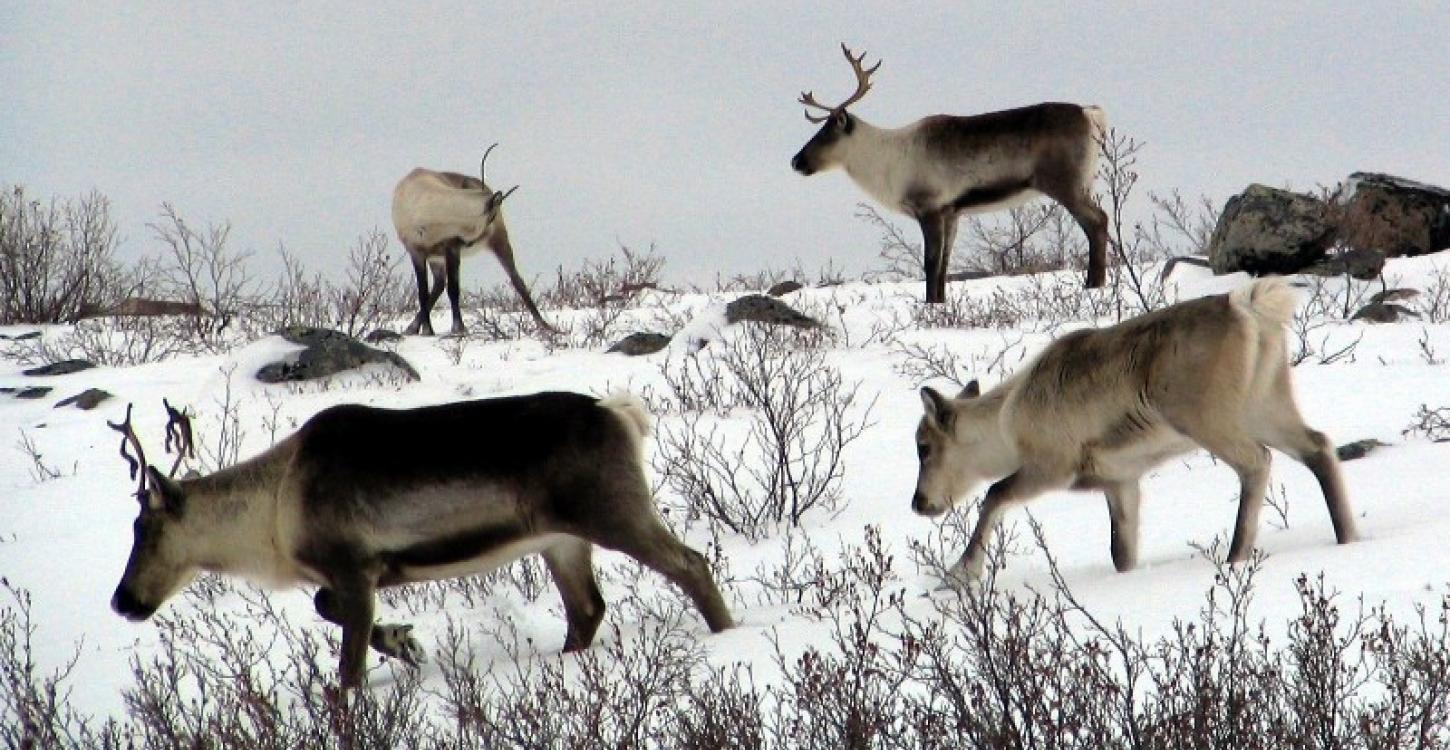
Bathurst Caribou Range Planning Process
March 21, 2015
Work is underway on range planning for the Bathurst Caribou herd. Working with co-management partners including the WRRB, Environment and Natural Resources (ENR), GNWT is leading the range planning process for the Bathurst caribou. A range plan will describe how the Bathurst Caribou range will be managed over time and help prepare for any future changes to habitat. Knowing what is happening on the range with respect to the caribou and their habitat, and the natural and human-caused disturbances that are also occurring, will provide information needed to make balanced land-use decisions and support a long-term vision of reducing risks to caribou.
The Bathurst Caribou herd’s range is linked to the caribou’s life cycle and seasonal [fall and spring] migrations. This includes the herd’s calving grounds near Bathurst Inlet and its winter range in the taiga forest below the treeline. The range planning process will involve identifying critical habitat that the Bathurst Caribou need for their survival and recovery. For example, the availability and nutritional quality of vegetation on the summer range and calving grounds can influence calf growth and is important to the survival of calves in early summer. Habitat used in late summer and fall is important for similar reasons –less productive habitat may contribute to poor physical condition for caribou and lower pregnancy rates in cows. Places that allow caribou to escape from predators, insects and deep snow, and migration routes are also examples of important habitat for the caribou.
The caribou’s range is affected by a variety of human activities such as winter roads, mineral exploration and development, and natural factors such as forest fires and weather. Habitat may be lost or disturbed by landscape changes, for example. Changes on the winter range due to forest fires may destroy lichens, a primary food for the caribou in winter. Extreme weather events may result in increased snowfall or icing events, conditions that may make it harder for caribou to travel or dig for lichens under the snow. Winter roads and other human land-use activities can make habitat less suitable for caribou, increase access, or disrupt their movements. These –and many other--threats to the Bathurst Caribou’s range may interact in some way, and the impact of these combined –or cumulative—effects is a concern. Range planning will include monitoring, assessing and managing these cumulative effects on the Bathurst caribou’s range. Once complete, the Bathurst Range Plan will include recommendations for habitat management approaches to reduce risks to caribou.
The WRRB is part of a Working Group that will develop the Range Plan, with assistance from Technical Task Groups. The Working Group met in December 2014 and in February 2015. Work centred on acquiring spatial datasets to map ecologically, culturally, and economically important areas of the range of the Bathurst herd. In addition, initial management approaches were developed and evaluated against future development scenarios. The WRRB also participates on the Steering Committee which will review and approve the Final Range Plan.
The Working Group will meet again on May 26-27 and then report to the Steering Committee on work completed to date on May 28.
The WRRB is looking forward to continuing to participate in range planning for the Bathurst Caribou. Watch for more information in future issues.